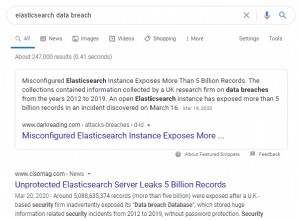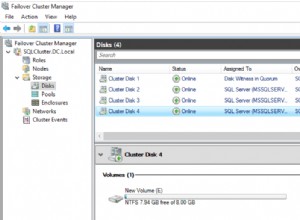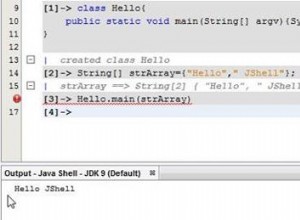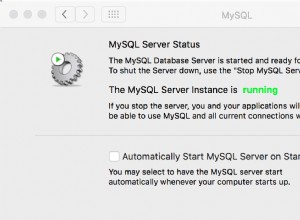Puedes hacerlo todo en uno Comando SQL usando CTE.
Asumiendo Postgres 9.6 y este esquema clásico de muchos a muchos (ya que no lo proporcionaste):
CREATE TABLE questions (
question_id serial PRIMARY KEY
, title text NOT NULL
, body text
, userid int
, categoryid int
);
CREATE TABLE tags (
tag_id serial PRIMARY KEY
, tag text NOT NULL UNIQUE);
CREATE TABLE questiontags (
question_id int REFERENCES questions
, tag_id int REFERENCES tags
, PRIMARY KEY(question_id, tag_id)
);
Para insertar un single pregunta con una matriz de etiquetas :
WITH input_data(body, userid, title, categoryid, tags) AS (
VALUES (:title, :body, :userid, :tags)
)
, input_tags AS ( -- fold duplicates
SELECT DISTINCT tag
FROM input_data, unnest(tags::text[]) tag
)
, q AS ( -- insert question
INSERT INTO questions
(body, userid, title, categoryid)
SELECT body, userid, title, categoryid
FROM input_data
RETURNING question_id
)
, t AS ( -- insert tags
INSERT INTO tags (tag)
TABLE input_tags -- short for: SELECT * FROM input_tags
ON CONFLICT (tag) DO NOTHING -- only new tags
RETURNING tag_id
)
INSERT INTO questiontags (question_id, tag_id)
SELECT q.question_id, t.tag_id
FROM q, (
SELECT tag_id
FROM t -- newly inserted
UNION ALL
SELECT tag_id
FROM input_tags JOIN tags USING (tag) -- pre-existing
) t;
dbfiddle aquí
Esto crea etiquetas que aún no existen sobre la marcha.
La representación de texto de una matriz de Postgres se ve así:{tag1, tag2, tag3} .
Si se garantiza que la matriz de entrada tiene etiquetas distintas, puede eliminar DISTINCT del CTE input_tags .
Explicación detallada :
- Insertar datos en 3 tablas a la vez usando Postgres
- ¿Cómo usar RETURNING con ON CONFLICT en PostgreSQL?
- ¿Cómo implementar una relación de muchos a muchos en PostgreSQL?
- No se puede INSERTAR:ERROR:el valor de la matriz debe comenzar con "{" o información de dimensión
Si tiene escrituras simultáneas puede que tengas que hacer más. Considere el segundo enlace en particular.




